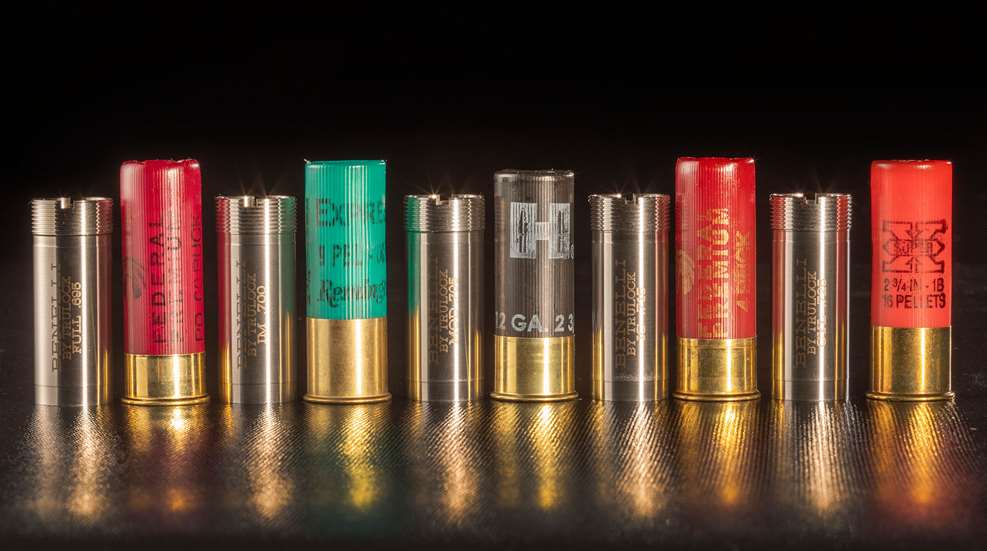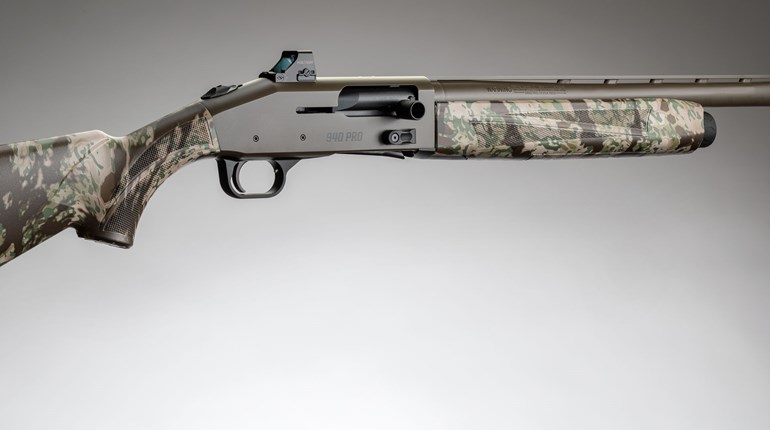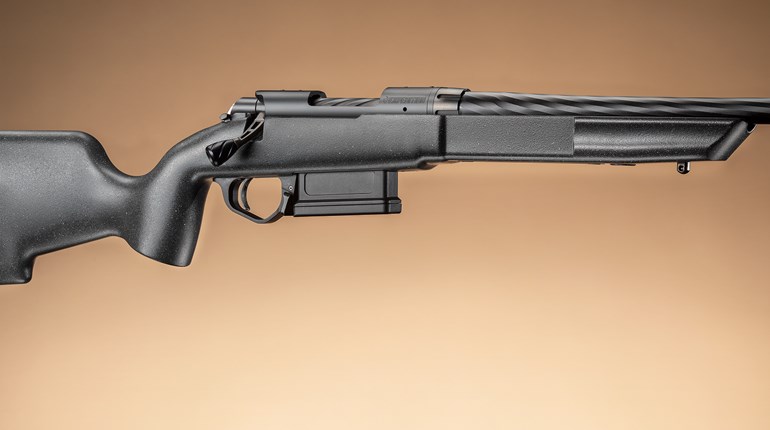
The ideal spread of your defensive-shotgun’s pattern is a personal choice. First, decide what’s best for your particular situation, then manipulate your gun’s pattern by testing loads and chokes until you find one that suits your needs.
Tight Patterns
A tight pattern—anything smaller than approximately 6 inches at 15 yards—should be reserved for situations where friendlies are likely to be in close proximity to targets. A tight-patterning shotgun in the home-defense world, however, is almost a misnomer, because if the defender is overly worried about errant pellets hitting unintended targets, likely the wisest choice would be to forgo the shotgun in favor of a pistol or carbine. At any rate, if a tight shotgun pattern is desired, the shooter has the option of switching to a constricted choke such as Improved Modified or Full choke, and/or using premium ammunition that is typically used for hunting, such as buffered and/or copper-plated buckshot.
If your shotgun has a fixed-cylinder choke, yet you still desire the tightest patterns possible, consider trying Federal’s FliteControl 00 buckshot load. Its wad is designed to stay with the shot for as long as possible after leaving the bore, thereby corralling it while in flight so patterns stay tight to deliver the maximum number of pellets to a target at 50 yards or more. Copper- or nickel-plated shot that is buffered by polymer material helps keep the pellets uniform while in flight, so they deviate from the pattern less than deformed pellets.
Mid-Size Patterns
What I consider the most desirable pattern is one that’s not so big as to be unpredictable, yet not so small it negates the shotgun’s main purpose, which is to mitigate small errors in aiming. Pardon my use of a hunting example in the defensive world, but I see the effects of pattern size while turkey hunting frequently: One guy wants to be able to shoot a turkey in the head at 60 yards, so he chooses an Extra Full choke and a premium load so that at 60 yards his pattern is about the size of a watermelon, thereby delivering a dozen or more pellets to a turkey’s softball-size head. And that’s great—at 60 yards. But the problem is, this guy is more susceptible to missing if he shoots at a turkey at 20 yards where the pattern may be the size of a tennis ball. Conversely, if a hunter wants to mitigate the possibility of missing, he may opt for a more open choke. At 20 yards, where this guy’s pattern is the size of a beach ball, it’s great, but at 60 yards, where his sparse pattern is the size of a car, it’s terrible.
For my anticipated home-defense scenario, a mid-size pattern that’s 10 to 12 inches in diameter at 15 yards is the most desirable. And, the only way to be sure your gun is delivering this type of pattern is to test your gun on paper using various combinations of loads and chokes. I will say that a cylinder choke shooting an average load of lead 00 buckshot typically produces patterns in this size range.
Open Pattern
Some defenders in certain situations want the most open patterns they can get. Generally, these people anticipate having to fire their shotguns in very close quarters and/or at close range at fast-moving targets. A tent camper in bear country might be one such scenario. Another might be in a small house with many stairwells. For these types of situations, a cylinder choke is almost always best, but even then, the ammo must be chosen carefully. In general, cheaper (non-plated, non-buffered) ammunition works best, and you might even consider going to a shot size smaller than buckshot such as basic lead No. 6s or No. 8s. Pattern multiple loads on paper at various ranges to see what opens up the most dramatically out of your particular shotgun. Even then, you might find that specialty loads, such as “spreader loads” are desirable. Fiocchi’s Interceptor Spreader No. 8 load, which uses a special choke that spreads the pellets upon launch, is a great example of such an option. From some barrels, it can double your shotgun’s pattern size.
The point is, your shotgun’s spread can be tailored to your needs by taking the time to test various loads, brands and chokes and combinations thereof. Once you find the best mix, buy several boxes of your chosen load, and then rest easy that any attacker will dread the spread.






































